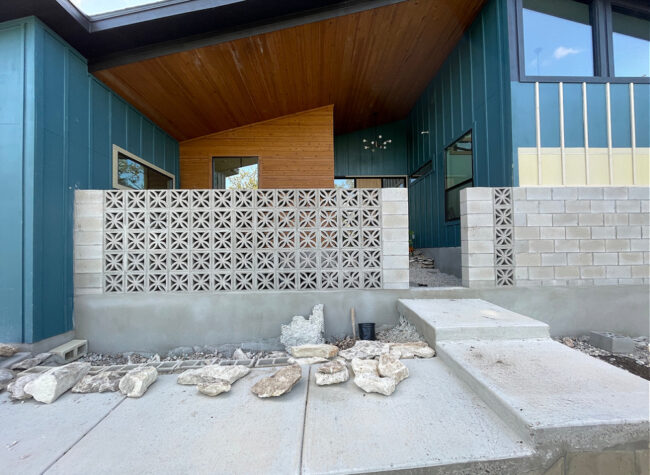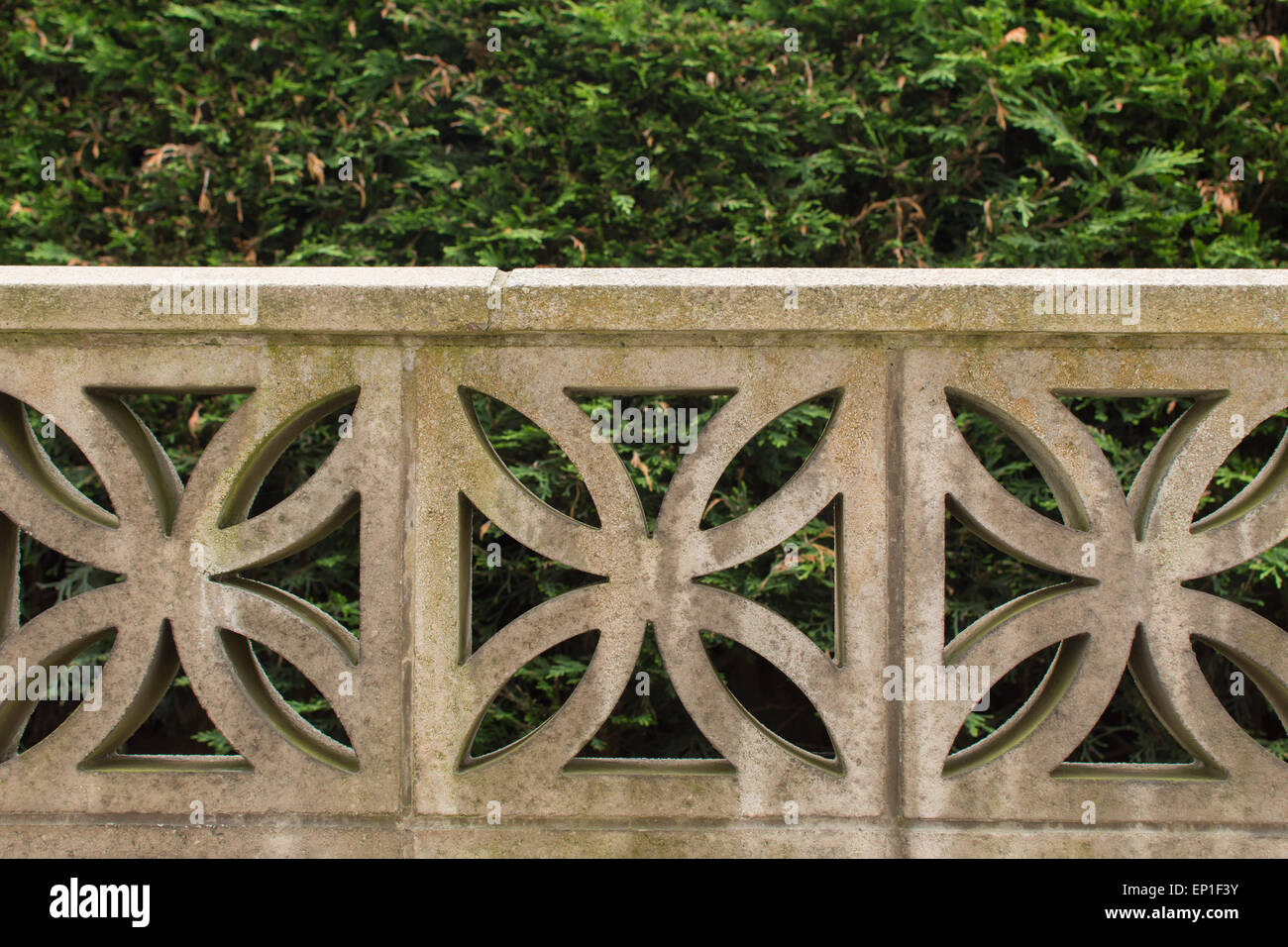When it comes to home design, decorative blocks for walls have gained immense popularity in recent years. With their unique aesthetic appeal and functional benefits, these blocks provide a versatile solution for both interior and exterior spaces. In this article, we will explore the various types of decorative blocks, their advantages, installation tips, and much more, drawn from my personal experience and insights from industry professionals.
What are Decorative Blocks?
Decorative blocks are pre-formed pieces of materials like concrete, glass, or stone that can be used to create visually appealing walls. They serve not just as a structural element but also as a design feature that can enhance the overall aesthetic of a space. From rustic to modern designs, decorative blocks offer endless possibilities for customization.
Types of Decorative Blocks
1. Concrete Blocks
Concrete blocks are sturdy and durable, making them ideal for load-bearing walls. They come in various textures and colors, allowing for creative designs.
2. Glass Blocks
Glass blocks are perfect for those who want to bring natural light into their spaces while maintaining privacy. These blocks come in various styles, including frosted and colored options.
3. Stone Blocks
Stone blocks provide a natural and rugged look. They can be made from a range of materials, including slate, granite, and limestone, all of which add character to your walls.
4. Decorative Cinder Blocks
Cinder blocks are lightweight and easy to handle. They often feature decorative patterns or textures that can transform a simple wall into a focal point.
Benefits of Using Decorative Blocks for Walls
Decorative blocks come with numerous benefits that make them an attractive choice for homeowners and designers alike. Here are some key advantages:
- Durability: Most decorative blocks are made from resilient materials, ensuring they can withstand the test of time.
- Low Maintenance: They require minimal upkeep, making them a practical choice for busy homeowners.
- Variety: Decorative blocks come in a wide range of styles, colors, and textures, allowing for creative expression.
- Energy Efficiency: Some blocks, like insulated concrete forms (ICFs), offer better insulation, which can lead to lower energy bills.
- Soundproofing: Many decorative blocks also provide sound-dampening qualities, enhancing the acoustic comfort of your space.
Choosing the Right Decorative Blocks
Choosing the right decorative blocks for your walls can be a daunting task given the plethora of options available. Here are some factors to consider:
1. Purpose of Use
Determine whether you need blocks for interior or exterior applications. Your choice may vary based on the environmental conditions and the desired aesthetic.

2. Style and Design
Select blocks that complement the overall style of your home. Consider whether you want a modern, rustic, or classic look.
3. Budget
Set a clear budget for your project. Decorative blocks vary in price, so it’s important to find a balance between quality and affordability.

4. Color and Texture
The color and texture of the blocks play a vital role in determining the overall atmosphere of a space. Choose options that fit well with your existing decor.
Installation Process for Decorative Blocks
While installing decorative blocks can be a great DIY project, it’s essential to do it correctly to ensure lasting beauty and stability. Here’s a step-by-step guide:

Step 1: Gather Necessary Tools and Materials
- Decorative blocks
- Masonry adhesive or mortar
- Level
- Trowel
- Measuring tape
- Safety gear (gloves, goggles)
Step 2: Prepare the Surface
Ensure the wall surface is clean and free of debris. If you’re installing blocks on an existing wall, check for any necessary repairs beforehand.

Step 3: Plan Your Layout
Before you start adhering the blocks, lay them out on the floor to visualize the final design. Adjust as needed to achieve the desired look.
Step 4: Apply Adhesive
Using a trowel, apply a layer of masonry adhesive or mortar to the back of the block. Place the block onto the wall, ensuring it’s level.

Step 5: Continue the Process
Repeat the process, working your way across the wall, ensuring each block is properly aligned with its neighbors.
Step 6: Finishing Touches
After all blocks are installed, clean any excess adhesive and allow it to cure as per the manufacturer’s instructions. If needed, you can also apply a sealant for added protection.

Comparison of Popular Decorative Block Types
| Type of Block | Durability | Cost | Insulation | Ease of Installation |
|---|---|---|---|---|
| Concrete Blocks | High | Medium | Medium | Moderate |
| Glass Blocks | Medium | High | Low | Challenging |
| Stone Blocks | Very High | High | Medium | Difficult |
| Decorative Cinder Blocks | Medium | Low | Low | Easy |
Pros and Cons of Decorative Blocks
Pros
- Versatile design options
- Durable and long-lasting
- Low maintenance requirements
- Can enhance property value
Cons
- Installation can be labor-intensive
- Higher upfront costs for certain materials
- Limited flexibility in design once installed
Personal Experience: My Journey with Decorative Blocks
When I decided to renovate my living room, I knew I wanted something unique that would stand out and provide character. After much research, I settled on decorative concrete blocks with a rustic finish. The installation process was a labor of love, but the outcome was beyond my expectations. The blocks not only transformed the space but also became a conversation starter when I had guests over.
Frequently Asked Questions (FAQs)
1. Are decorative blocks suitable for exterior walls?
Yes, decorative blocks like concrete and stone are often used in exterior applications due to their durability and weather resistance.
2. How do I clean decorative blocks?
Most decorative blocks can be cleaned with soap and water. For tougher stains, you might consider a mild detergent or a commercial cleaner designed for the block material.
3. Can I paint decorative blocks?
Yes, you can paint decorative blocks, but make sure to use paint suitable for masonry to ensure proper adhesion and longevity.
4. How do decorative blocks compare to traditional drywall?
Decorative blocks are generally more durable and offer unique design possibilities compared to traditional drywall, which can be easily damaged and may require painting.
5. Are glass blocks energy efficient?
Glass blocks can provide some energy efficiency benefits, especially if they are insulated, but they may not provide the same level of insulation as concrete alternatives.
Conclusion
Decorative blocks for walls are a beautiful and practical solution for enhancing any space. With their versatility, durability, and aesthetic appeal, they can transform a mundane area into a stylish focal point. Whether you’re considering a DIY project or hiring a professional, understanding the different types of decorative blocks, their benefits, and the installation process is essential for achieving the best results. I hope this guide helps you on your journey to create stunning decorative walls in your home!